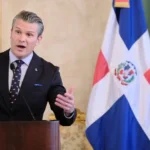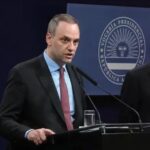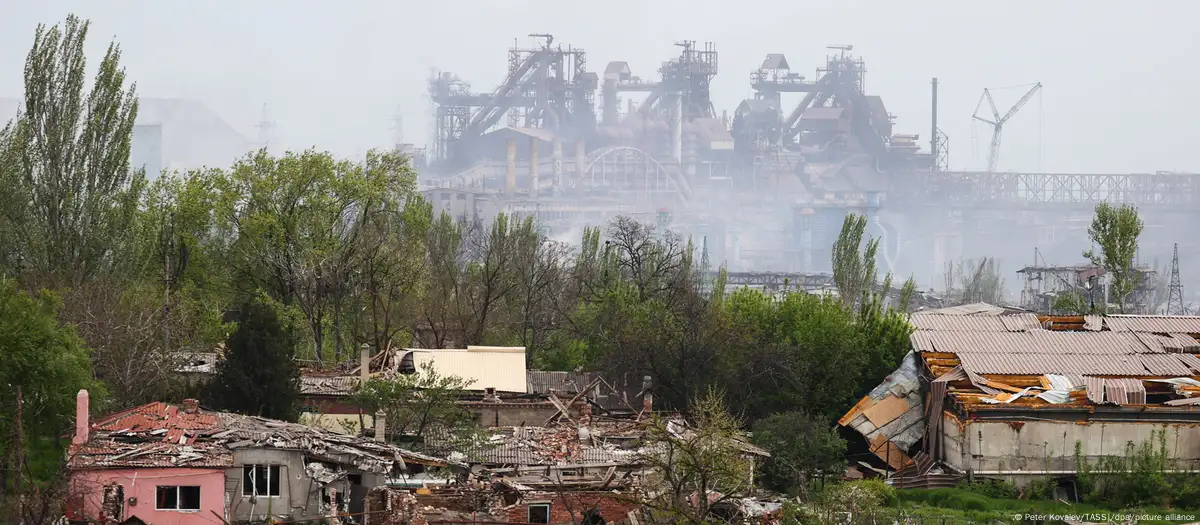
At the summit in Alaska, Putin would have demanded full control over this region to end the conflict. Area has ties with Russians, but is also relevant to Ukrainians.
They are still not confirmed in the press, but they already have a heated debate in the US and Europe: Russian President Vladimir Putin, and his American counterpart Donald Trump would have agreed in his summit in Alaska, that Ukraine should give in to Donetsk and Lugansk regions to Russia. But could Ukraine be forced to take this step?
Putin would be demanding that the Ukrainian forces will completely withdraw from the Donbass region. In return, the Russian president would suspend the fighting along the rest of the front line. This applies in particular to the southern regions of Ukraine, Kherson and Zaporíjia, where Russian forces also occupy significant areas.
Donetsk and Lugansk: Ukrainian, but close to Russia
In recent years, Putin has emphasized the importance of the regions of Donetsk and Lugansk, which make up the Donbass. According to him, the region has historical ties with Russia and the legacy of the Soviet Union. However, according to the Constitution, it belongs to Ukraine, and this was unquestionable even during the Soviet era.
While the Crimea Peninsula was only transferred from Russia to Ukraine in 1954 by then -head of the Soviet government, Nikita Khrushchev – a measure that is still controversial today in Russia – the regions of Donetsk and Lugansk have been part of Ukraine since the founding of the Soviet Socialist Republic of Ukraine in 1919.
However, Donbass has always had a strong Russian influence. Already in the 19th century, and later in the Soviet era, he was considered an industrial center, rich in mineral resources. When coal mining and steel and chemistry industries grew, many people from all over the Soviet Union, but especially from Russia, have moved there in search of work. Even before 2014, a clear majority of the population was Russian language.
And this part of East Ukraine went close to Russia, even when many in the west of the country already wanted stronger ties with the European Union (EU) than with Moscow. Viktor Yanukovych, former Ukrainian president supported by Kremlin, was also born in Donetsk and obtained his greatest support in the region.
Donbass has been the target of disputes since 2014
When Yanukovych was knocked down after the Maidan Revolution in 2014 and had to flee to Moscow, Donbass became a point of discord between Moscow and Kiev. The Kremlin then attached the Crimea Peninsula, and the agitation spread through the east of Ukraine. Armed groups supported by Russian weapons and combatants declared the self -proclaimed “popular republics” in Donetsk and Lugansk.
But if Moscow expected to obtain ample support for this measure among the Russian -speaking Ukrainians, he soon disappointed. The separatist war in eastern Ukraine was widely rejected, and in the 2019 presidential elections of Ukraine voters gave a large majority to Volodimir Zelenski – even in the areas of eastern Ukraine still controlled by Kiev. Zelenski himself grew up speaking Russian, and his policy of seeking to end the conflict without giving up the sovereignty of Ukraine had great support.
Here was Kerson City Hall, destroyed by an attack with Russian missiles in June 2025 | Volodymyr Zelenskyy/X
At the beginning of the large -scale Russian invasion in February 2022, Donbass was still a central theme for Putin. In a televised speech, he justified his “special military operation” in Ukraine saying that the “self -proclaimed” republics of Donetsk and Lugansk had asked Moscow for help. He claimed that Russian language residents in the areas of eastern Ukraine still controlled by Kiev would be victims of a “genocide” – allegations for which there is no evidence to this day.
Why the southeast of Ukraine is important geopolitically
Today, the entire Lugansk region and about 70% of the Donetsk region are under Russian control. This means that about 88% of the entire Donbass is occupied by Russia. According to estimates, more than four million people live in these two areas. In addition to coal and ore deposits, there are several deposits of lithium, cobalt, titanium and rare land required for the production of high technology items.
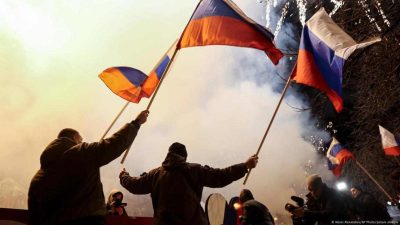 Protesters Pro-Russia in the self-proclaimed “Popular Republic” of Donetsk in February 2022 | Alexei Alexandrov/AP Photo/Picture Alliance
Protesters Pro-Russia in the self-proclaimed “Popular Republic” of Donetsk in February 2022 | Alexei Alexandrov/AP Photo/Picture Alliance
The two regions also play an important role for Russia in terms of terrestrial connection with the Crimea Peninsula, which can currently only be reached from Russian territory through the Kerch Bridge.
If the Donbass, that is, the regions of Lugansk and Donetsk, belonged to Russia and the front line in the regions of Zaporjia and Kherson were frozen – that is, if Russia occupied these areas – Crimea would also be connected to Russia by land. This would permanently cut Ukraine’s access to the Azov Sea, the Black Sea part between Crimea and Russia.
Fortified belt from Ukraine
For Ukraine, Donbass is also far from only economic importance. In areas still controlled by Kiev, Ukraine established its so -called fortified belt. This is the most important line of defense, which has so far prevented Russia from advancing further to the center of Ukraine.
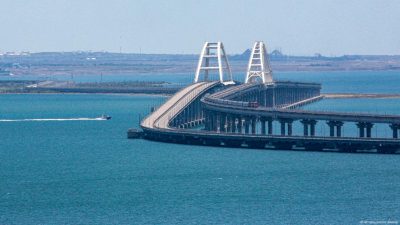 The Kerch Bridge is today the only Russian territory access route to Crimea Anexada | AP/DPA/PICTURE ALLIANCE
The Kerch Bridge is today the only Russian territory access route to Crimea Anexada | AP/DPA/PICTURE ALLIANCE
It is made up of several key cities and fortified positions, such as Kramatorsk, Slavyansk and KostyAntynivka, which Ukraine has kept under its control so far, despite great losses. Behind this fortified belt are the vast open plains in the center of Ukraine, which without a line of defense would be extremely vulnerable to a new Russian offensive.
Without comprehensive and reliable security guarantees, Ukrainian President Volodimir Zelenski cannot consider leaving the remaining areas of Donbass.
And even internally, it would be very difficult to implement. On the one hand, the country’s constitution forbids it to make such a concession. On the other hand, it would be extremely unpopular in Ukraine: according to a survey by the International Institute of Sociology of Kiev, about 75% of Ukrainians reject any assignment of territory to Russia.
Originally published by DW on 08/20/2025
By Thomas Latschan
Source: https://www.ocafezinho.com/2025/08/20/o-que-ha-em-donbass-chave-no-debate-sobre-guerra-na-ucrania/
